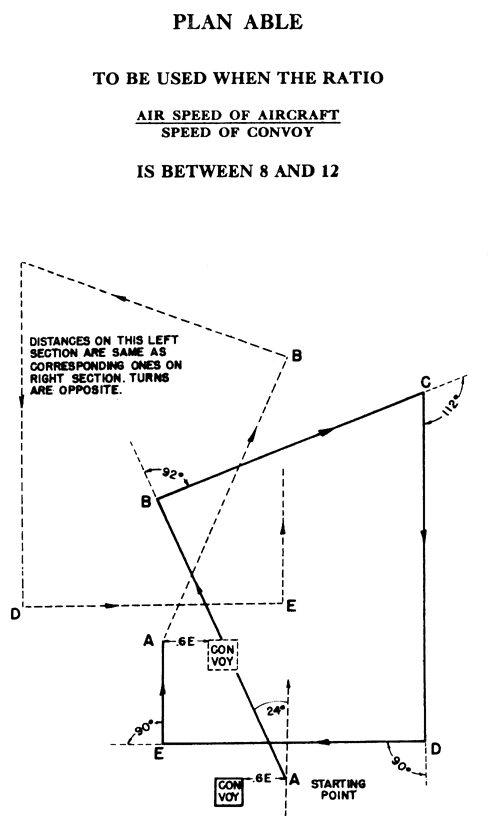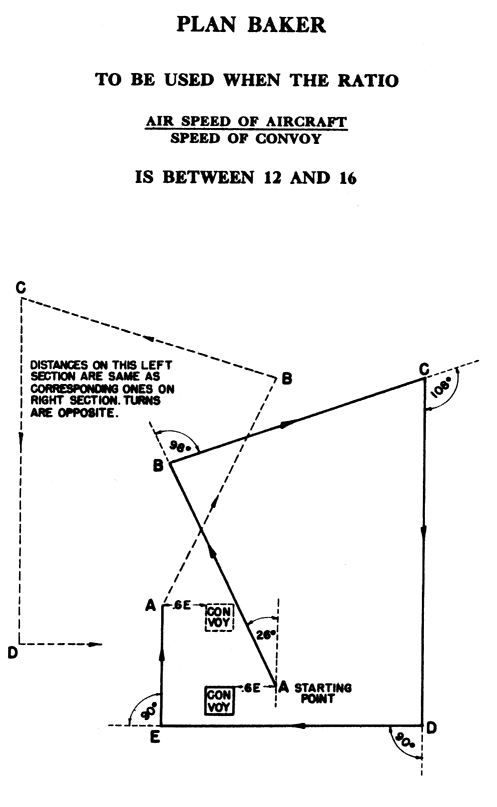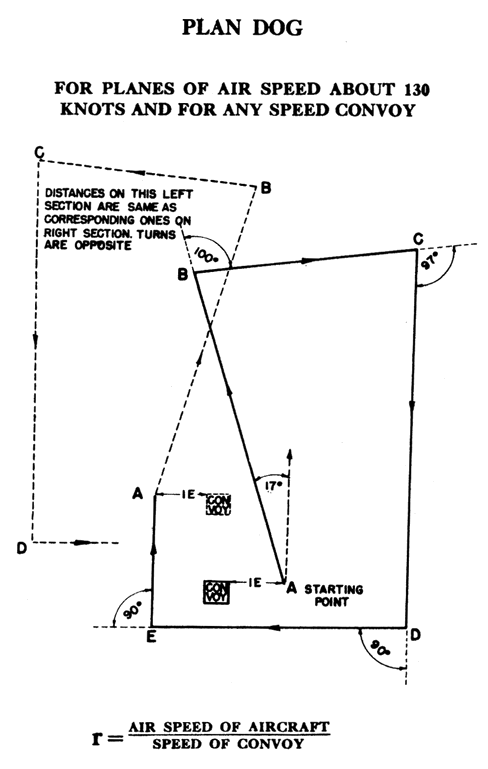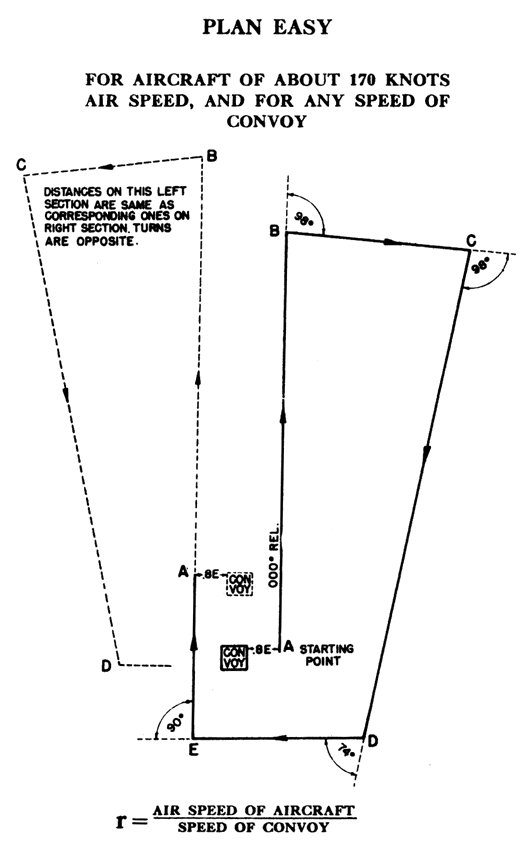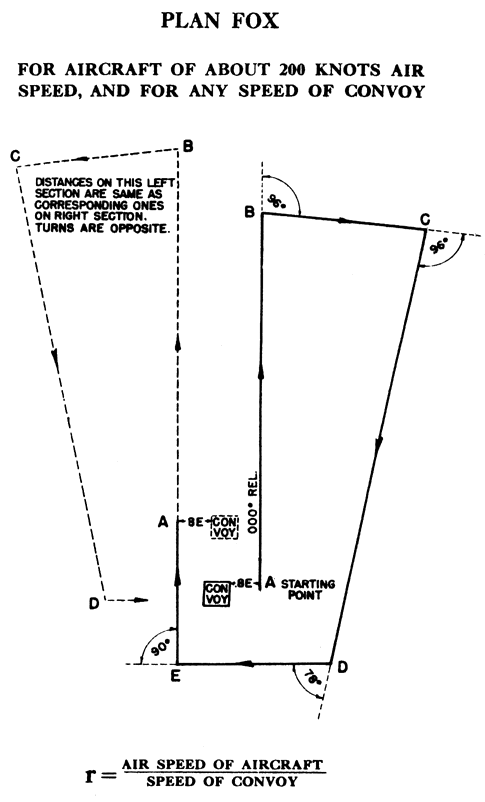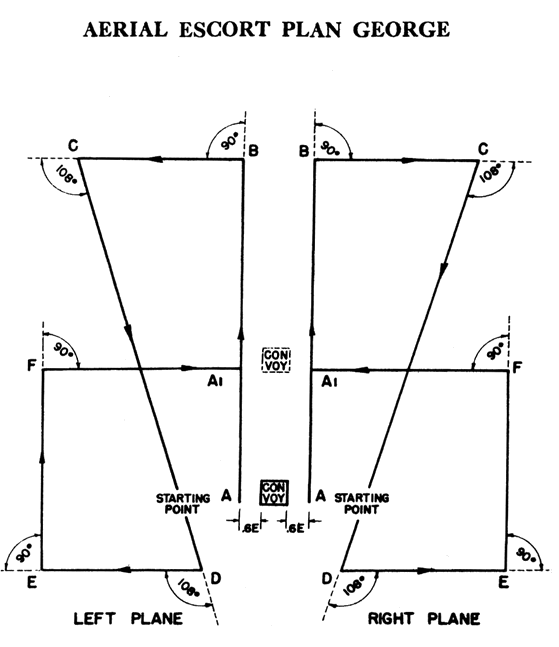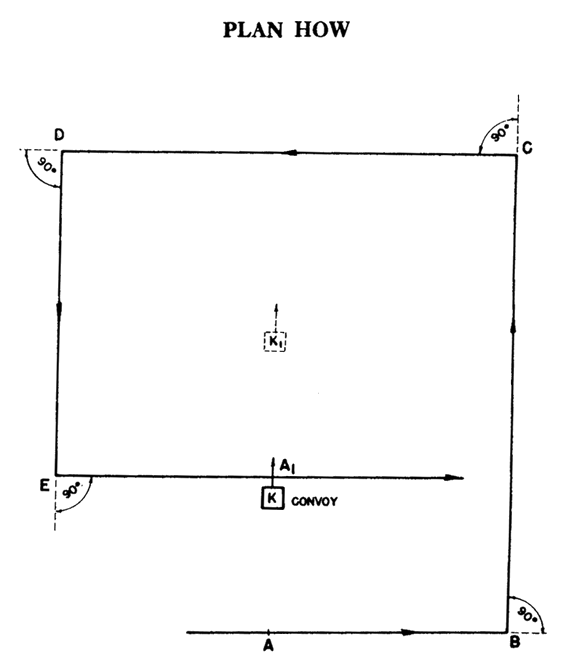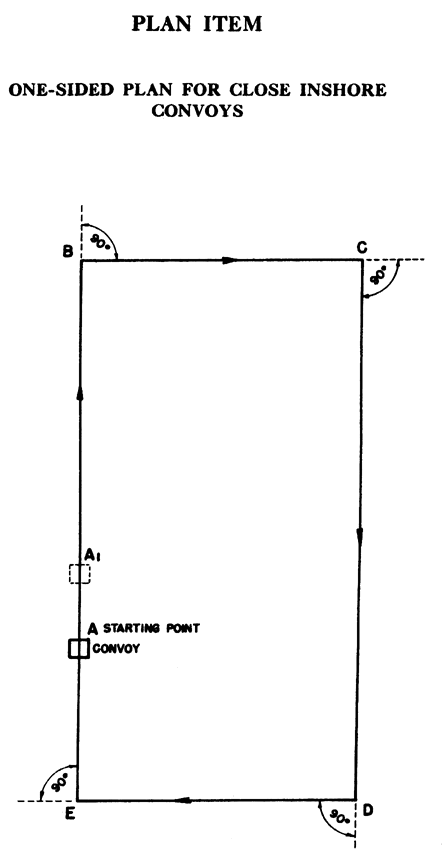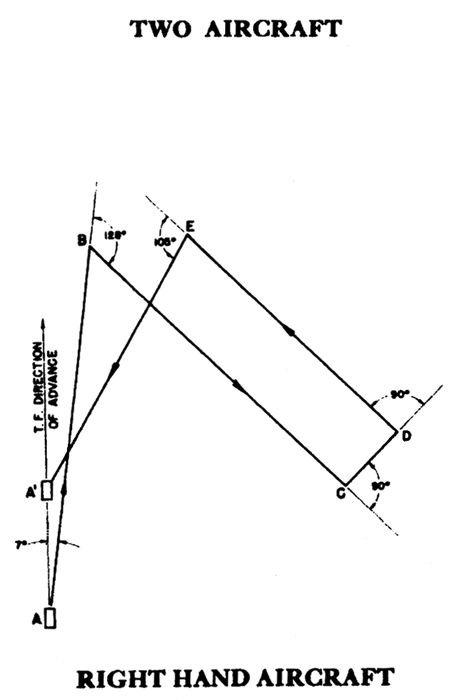| 5481 |
COBRA (Y) |
Patrol around convoy at a distance of (Y) miles. |
|
Normal day conditions. No indication of shadowing S/M. S/M known to be in vicinity but bearing unknown. |
| 5482 |
CROCODILE (Y) |
Patrol ahead of convoy from beam to beam at radius (Y) miles. |
|
With fast convoys. |
| 5483 |
VIPER |
Patrol around convoy at visibility distance. |
|
By day in condition of poor and/or variable visibility when S/M are known to be in the vicinity. For general use at night. |
| 5484 |
ADDER |
Patrol ahead of convoy at distance of 8 to 12 miles, length of patrol 15 miles either side of center line. |
|
By day when attack is expected. |
| 5485 |
ALLIGATOR
"PORT" or "STARBOARD" |
Patrol on side indicated at distance of 10 miles from convoy along line parallel to convoy's advance, length of patrol 10 miles ahead and astern of beam bearing. |
|
When circumstances render a beam patrol desirable. |
| 5486 |
FROG |
Patrol astern of convoy at distance of (Y) miles. Length of patrol to be 2 (Y) miles either side of center line. |
|
To detect submarines trailing the convoy. Use at dusk prior to alteration of course by convoy. |
| 5487 |
(X) PYTHON (Y) |
Search on (X) bearing for S/M (Y) miles distant. Aircraft will carry out square search around this position for 20 minutes using 2 mile visibility. |
|
When S/M has been detected by D/F bearings and its distance determined. |
| 5488 |
(X) MAMBA |
Search on (X) bearing for distance of 30 miles and return. |
|
When S/M has been detected by D/F bearing but distance is unknown. |
| 5489 |
(X) LIZARD (Y) |
Search (X) sector to a distance of (Y) miles. Sectors from true north as follows:
A - 000 to 060
B - 060 to 120
C - 120 to 180
D - 180 to 240
E - 240 to 300
F - 300 to 360
|
|
When a special area is suspected (may be used at night). |
| 54810 |
(X) REPTILE (Y) |
Search on (X) bearing to a distance of (Y) miles for a submarine detected by D/F bearing. If nothing is sighted, act in accordance
with previous instructions. |
|
When S/M has been detected by D/F bearings. |




